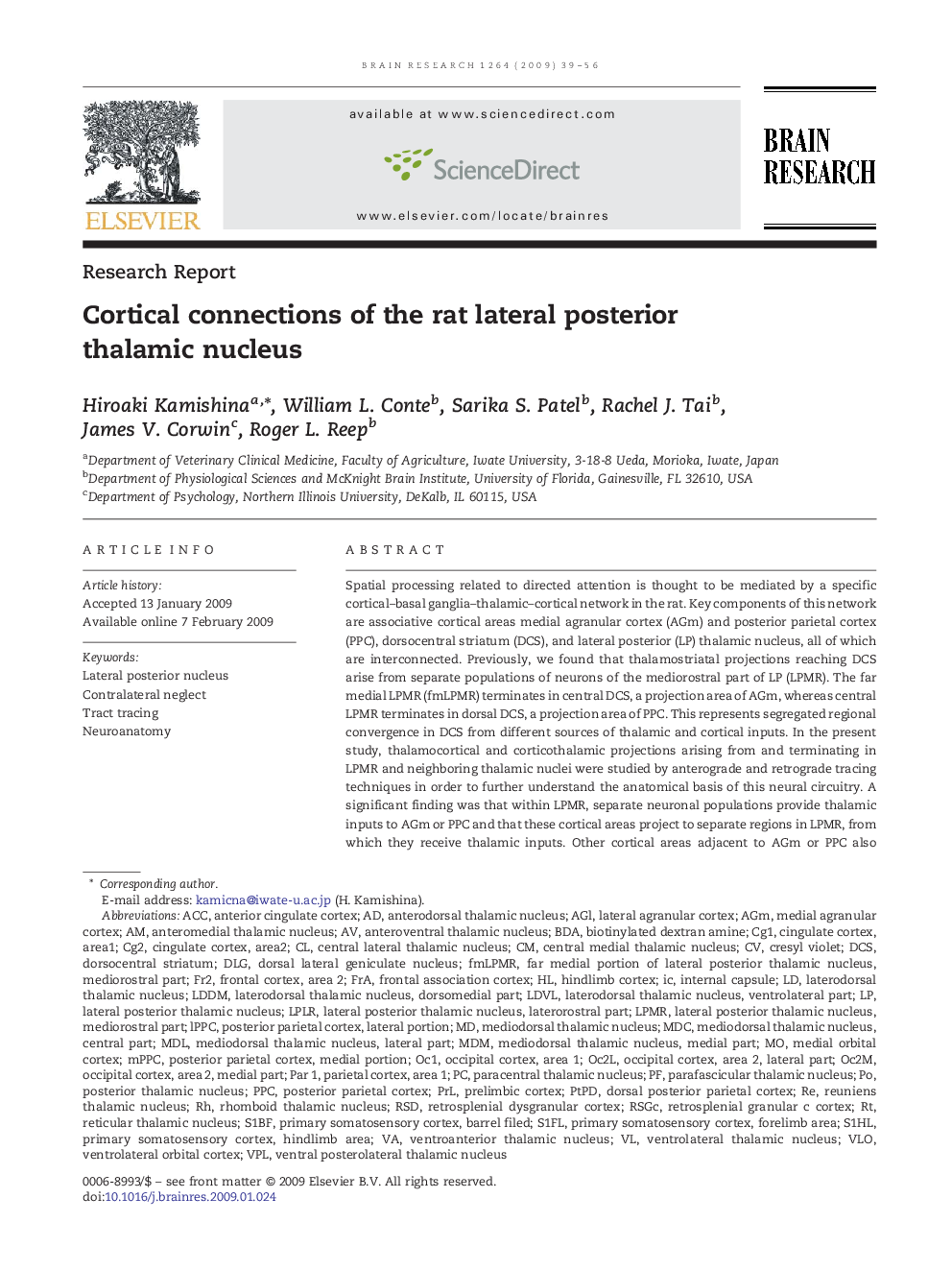| Article ID | Journal | Published Year | Pages | File Type |
|---|---|---|---|---|
| 4328510 | Brain Research | 2009 | 18 Pages |
Abstract
Spatial processing related to directed attention is thought to be mediated by a specific cortical-basal ganglia-thalamic-cortical network in the rat. Key components of this network are associative cortical areas medial agranular cortex (AGm) and posterior parietal cortex (PPC), dorsocentral striatum (DCS), and lateral posterior (LP) thalamic nucleus, all of which are interconnected. Previously, we found that thalamostriatal projections reaching DCS arise from separate populations of neurons of the mediorostral part of LP (LPMR). The far medial LPMR (fmLPMR) terminates in central DCS, a projection area of AGm, whereas central LPMR terminates in dorsal DCS, a projection area of PPC. This represents segregated regional convergence in DCS from different sources of thalamic and cortical inputs. In the present study, thalamocortical and corticothalamic projections arising from and terminating in LPMR and neighboring thalamic nuclei were studied by anterograde and retrograde tracing techniques in order to further understand the anatomical basis of this neural circuitry. A significant finding was that within LPMR, separate neuronal populations provide thalamic inputs to AGm or PPC and that these cortical areas project to separate regions in LPMR, from which they receive thalamic inputs. Other cortical areas adjacent to AGm or PPC also demonstrated reciprocal connections with LP or surrounding nuclei in a topographic manner. Our findings suggest that the cortical-basal ganglia-thalamic network mediating directed attention in the rat is formed by multiple loops, each having reciprocal connections that are organized in a precise and segregated topographical manner.
Keywords
LppClateral agranular cortexretrosplenial dysgranular cortexDLGS1BFMDMVPLMPPCFR2RSDVLOLDvlOc1Oc2LOc2MS1FLventroanterior thalamic nucleusRSGcACCBDAMDCMDLAGMAGLCg1PPCDCsCg2PRLFRAbiotinylated dextran aminetract tracingFrontal association cortexfrontal cortex, area 2anterior cingulate cortexMedial orbital cortexVentrolateral orbital cortexMedial agranular cortexposterior parietal cortexprelimbic cortexNeuroanatomyanteromedial thalamic nucleusposterior thalamic nucleusrhomboid thalamic nucleuscentral medial thalamic nucleuslaterodorsal thalamic nucleusMediodorsal thalamic nucleusreuniens thalamic nucleusventrolateral thalamic nucleusanterodorsal thalamic nucleuslateral posterior thalamic nucleusreticular thalamic nucleusparacentral thalamic nucleusventral posterolateral thalamic nucleusLateral posterior nucleusdorsal lateral geniculate nucleusparafascicular thalamic nucleusanteroventral thalamic nucleusCresyl violetinternal capsule
Related Topics
Life Sciences
Neuroscience
Neuroscience (General)
Authors
Hiroaki Kamishina, William L. Conte, Sarika S. Patel, Rachel J. Tai, James V. Corwin, Roger L. Reep,
